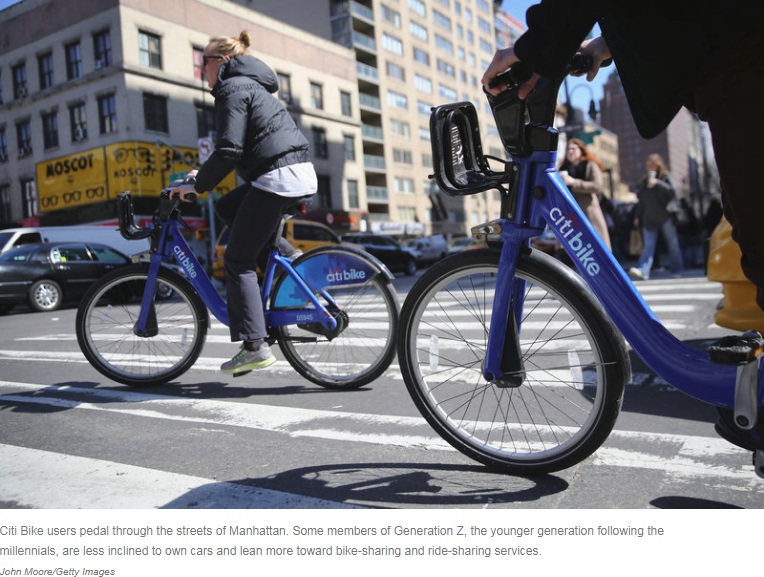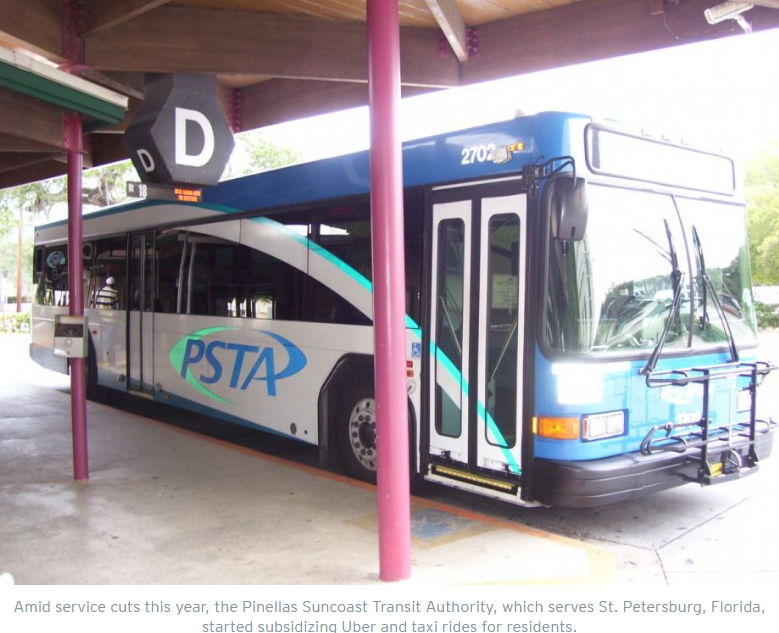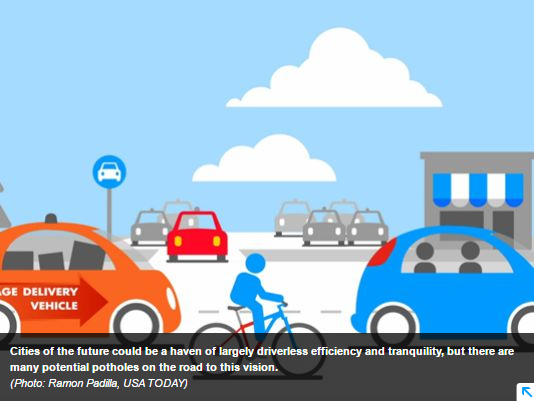
by Innovative Mobility Research | Dec 8, 2017 |
December 8, 2017 By: NATALIE BETTENDORF Sheryl Connelly has a crazy job. She’s in charge of looking into the future for Ford Motor Co. The automaker is trying to predict how people my age — from Generation Z — will use cars. “I have two Gen Zers at home,” Connelly says. “So my 16-year-old daughter is thrilled, actually. Her car is ready to go. As soon as she has her license, it’s in the driveway. And so she sits in her car and she listens to the radio and she loves her car.” That’s definitely not me. I’m 18 and I don’t want a car. I am from the San Francisco Bay Area. I take buses and trains. I bike, and when I need a car, I use Lyft. Connelly says Gen Z is a game changer. “They don’t really care about ownership,” she says. “They don’t necessarily see that their vehicle is going to be a status symbol. In fact, they’re really savvy customers and can be quite frugal.” Read the rest of the article...

by Innovative Mobility Research | Oct 6, 2017 |
By Luz Lazo October 4 Last fall, then-Mayor Stephanie Rawlings-Blake touted Baltimore’s new bike-rental system as a sign of the city’s progress. “Our bike-share program will provide citizens with convenient and on-demand access to bikes for short-distance trips throughout the city,” she had said. “This is going to be great.” By summer, most of the 25 bike stations scattered around the city’s downtown and tourist areas were empty. Many of the 230 bikes were unaccounted for. Others had been found badly battered. About 100 bikes were in the shop on a given day in August, so many that keeping up with repairs was impossible. So the city chose to shut down the program, work on a solution, and possibly start over. To read the rest of the article, visit: ...

by Innovative Mobility Research | Oct 19, 2016 |
BY JOSH COHEN SEPTEMBER 8, 2016 In St. Petersburg, Florida — a city of about 257,000 residents sitting on the Gulf Coast next to Tampa — people have just a few options for getting around town. They can, of course, drive personal cars, walk or bike; catch a bus operated by the Pinellas Suncoast Transit Authority (PSTA); or hire taxis and Ubers. From February to August this year, the last mode choice on that list was likely the cheapest, most efficient option for accessing the bus. In an effort to encourage transit ridership and alleviate the impact of service cuts brought on by budget woes, PSTA was subsidizing 50 percent of the cost of taking rides with Uber, United Taxi (the local cab company) or Care Ride (a paratransit service) if those rides were connecting to the bus. That sort of partnership between public transit agency and ride-hailing company isn’t yet common, but examples are popping up around the country as cash-strapped municipalities look for ways to supplement their bus and rail routes and better serve low-density areas with so-so transit ridership. Those in favor of the arrangement say taking advantage of new technologies and service providers is a win-win for forward-looking transit agencies. Skeptics caution that the things that make companies such as Uber and Lyft profitable are incompatible with transit agencies’ obligation to provide quality, convenient, equitable service. To read the full article, visit:...

by Innovative Mobility Research | Feb 8, 2016 |
Marco della Cava, 12:28 p.m. EST November 13, 2015 SAN FRANCISCO – The city of the future has had countless fantasy blueprints, from The Jetsons’ pleasant hive of automated efficiency to Blade Runner’s dystopian tangle of urban chaos. But the reality is the city of future is closer than you think, as tech companies and automakers floor the pedal on projects ranging from cars that drive themselves to apps that aggregate transportation options. Conversations with mobility experts here and abroad paint a picture of an urban revolution that is already underway in a patchwork of cities from Seattle to Stockholm. “The main thing with automated and connected tech is to make sure it’s reliable first,” says Chris Hendrickson, director of the Traffic21 Institute at Carnegie Mellon University. “But the opportunities for change are impressive.” To read the rest of the story,...
by Innovative Mobility Research | Nov 3, 2015 |
Authors: Susan Shaheen, Nelson Chan, Apaar Bansal, Adam Cohen Date Published: November 3rd, 2015 Abstract: Shared mobility – the shared use of a vehicle, bicycle, or other mode – is an innovative transportation strategy that enables users to gain short-term access to transportation modes on an “as-needed” basis. The term shared mobility includes various forms of carsharing, bikesharing, ridesharing (carpooling and vanpooling), and on-demand ride services. It can also include alternative transit services, such as paratransit, shuttles, and private transit services, called microtransit, which can supplement fixed-route bus and rail services. With many new options for mobility emerging, so have the smartphone “apps” that aggregate these options and optimize routes for travelers. In addition to innovative travel modes, new ways of transporting and delivering goods have emerged. These “courier network services” have the potential to change the nature of the package and food delivery industry. Shared mobility has had a transformative impact on many global cities by enhancing transportation accessibility, while simultaneously reducing driving and personal vehicle ownership. A number of environmental, social, and transportation-related benefits have been reported due to the use of various shared mobility modes. Several studies have documented the reduction of vehicle usage, ownership, and vehicle miles or kilometers traveled (VMT/VKT). More research is needed, nevertheless, to further understand impacts on a city and regional level and across the wide range of shared mobility modes. Shared mobility could also extend the catchment area of public transit, potentially playing a pivotal role in bridging gaps in existing transportation networks and encouraging multi-modality by addressing the first-and-last mile issue related to public transit access. Furthermore, shared mobility...





